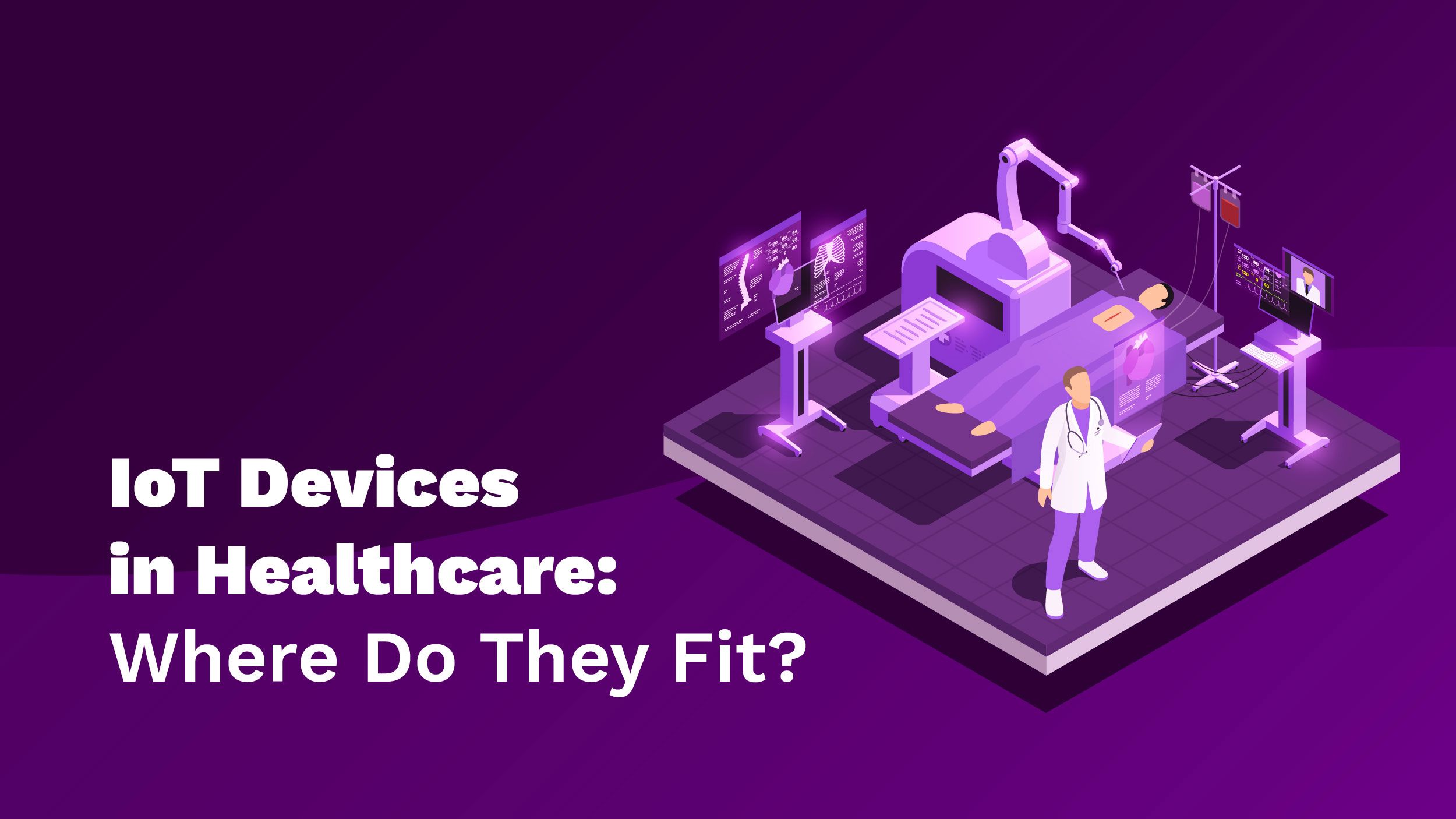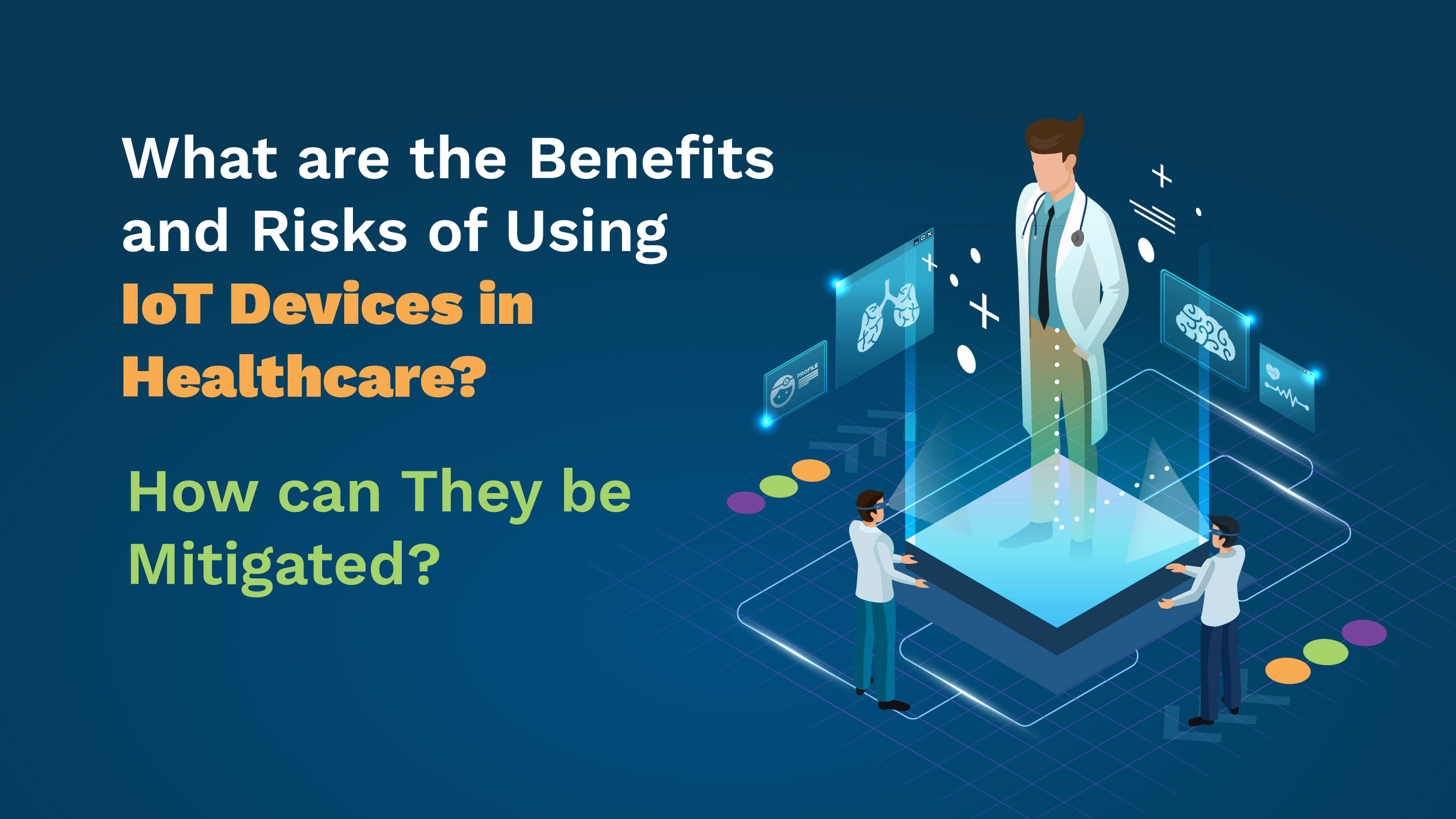There are many technologies out there that are causing a stir in the healthcare sector. In the same way that we have technology like augmented reality, machine learning, and artificial intelligence. As a result, you may find their applications in all fields and industries, even though some of them might just be ballyhoo.
However, the Internet of Things (IoT) is the most advanced technology, and it has brought forth a wide range of applications in healthcare that go beyond being just gimmicks and are actually quite helpful.
IoT devices in healthcare have been witnessing strong demand in recent years. Healthcare organizations are among the many sectors where businesses are investing heavily in IoT device development. In this blog, we will talk about what IoT healthcare exactly means, along with the benefits and risks of using IoT devices in the healthcare sector.
Let’s get started!
What is IoT in Healthcare?
IoT healthcare essentially refers to the use of Internet of Things (IoT) technology in the healthcare industry. It entails linking medical equipment to internet computer networks so that data collection and exchange is made possible via sensors, medical equipment, and other healthcare equipment. Then, using the insights gained from the analysis, new apps in the field of healthcare can be created to enhance patient care, increase operational effectiveness, and so on.
To put it simply, IoT in healthcare is revolutionizing medical technology by seamlessly connecting devices and enabling real-time data exchange for enhanced patient care.
IoT Devices in Healthcare: Where Do They Fit?

IoT applications within healthcare are designed to benefit not only healthcare institutions but also extend advantages to patients. In essence, the role of IoT in healthcare encompasses the following:
- Streamlining emergency room wait times
- Monitoring patients, staff, and inventory movements
- Optimizing drug administration
- Guaranteeing the presence of essential hardware
Now, these advantages cannot be attained without using the best IoT device types for healthcare. A few of these prominent types of IoT devices in healthcare are as follows:
1. Hearables:
Hearables stand as modern hearing aids, reconnecting those with hearing loss to the world. IoT-powered devices have significantly changed the field.
Sound customization is made possible by these gadgets’ smooth Bluetooth integration with smartphones. They give users the ability to amplify, equalize, and filter real-world sounds. Noteworthy among them is Doppler Labs.
2. Ingestible Sensors:
A testament to the wonders modern science can perform, ingestible sensors are tiny, pill-sized gadgets that monitor pharmaceuticals in our systems and notify users and doctors of any irregularities. For diabetic patients, these sensors may be useful in managing symptoms and providing early disease alerts.
3. Moodables:
It’s no longer just science fiction. An innovative mood-enhancing device made to improve your mood all day long is starting to become a reality. Sensors that can elevate mood are being actively developed by businesses like Thync and Halo Neurosciences. These “Mood-ables”, which are worn on the head, send mild electrical currents to the brain to improve mood.
4. Computer Vision Technology:
Drone technology, which mimics visual perception for wise decision-making, was created through the merging of computer vision technology and artificial intelligence (AI). For instance, drones like Skydio use computer vision to recognize objects and navigate around them, improving navigation and assisting those who are visually impaired.
5. Healthcare Charting:
IoT devices in healthcare reduce manual labor. For example, doctors use them to record crucial information about patients, such as blood pressure and temperature, on patient charts. After that, the information is charted into an IoT-connected app for convenient access, which could save doctors up to 15 hours per week of manual charting.
What are the Benefits and Risks of Using IoT Devices in Healthcare? How can They be Mitigated?

IoT’s rise in the healthcare industry has brought about priceless solutions that lower costs, boost productivity, and provide medical professionals access to information that will help them treat patients more accurately and lower common medical errors. However, as IoT transforms healthcare, it reveals several flaws. While IoT offers healthcare practitioners a number of benefits, it also creates additional risks.
Understanding the dual nature of benefits and risks is crucial if your organization is considering the use of IoT solutions in healthcare. Let’s explore these elements in more detail, starting with the benefits of IoT in healthcare.
Top 3 Benefits of using IoT devices in healthcare:
- Remote patient monitoring: IoT devices can offer ongoing patient health state monitoring, enabling healthcare professionals to spot and react to changes in real time. This may enhance patient outcomes and lower readmissions to hospitals.
- Improved efficiency and cost-effectiveness: IoT devices have the potential to automate a number of healthcare procedures, including inventory control and equipment maintenance, which would boost effectiveness and save costs.
- Enhanced patient engagement: IoT devices give patients access to their own health data and personalized feedback, empowering them to take charge of their health. Greater patient involvement and improved compliance with treatment plans may result from this.
Top 3 Risks of using IoT devices in healthcare:
- Security and privacy concerns: Cyberattacks that corrupt patient data and could potentially cause patients harm can target IoT devices. Privacy issues are also raised by the gathering and storage of sensitive health data.
- Interoperability and compatibility issues: It might be difficult to integrate different devices and systems due to interoperability and compatibility concerns caused by the absence of IoT device standardization.
- Reliability and accuracy: The quality of data obtained and the efficacy of healthcare interventions may be impacted by the reliability and accuracy issues with IoT devices.
Mitigating risks associated with IoT devices in healthcare:
Now that we’re familiar with the risks linked to IoT in healthcare, let’s dive into some smart ways to tackle these challenges.
- Security measures: To prevent unauthorized access to IoT devices and patient data, use robust safety protocols including encryption, authentication, and access controls.
- Privacy safeguards: To preserve patient privacy, ensure compliance with privacy laws like the General Data Protection Regulation (GDPR) and adopt privacy-enhancing technologies.
- Interoperability standards: Support the creation and acceptance of interoperability standards to guarantee the easy integration of IoT devices into current healthcare systems.
- Data quality assurance: Implement techniques, such as device calibration and routine maintenance, to authenticate and verify the reliability and accuracy of data gathered by IoT devices.
- User education: Give patients and healthcare workers complete guidance on the pros and cons of using IoT devices, as well as the safest and most secure usage techniques.
Innovative IoT Devices Making Waves in Healthcare
Listed below are some of the cool IoT gadgets making waves in healthcare and transforming medical technology. From smart wearables to remote monitoring gizmos, here’s a sneak peek into the latest IoT devices in healthcare.
- The Philips Remote Patient Monitoring System employs IoT tech for remote patient tracking, aiding care teams in curbing hospital readmissions and enhancing results.
- The FDA-approved and smart Medtronic MiniMed 670G Insulin Pump: leverages IoT to deliver insulin automatically according to real-time glucose levels. A game-changer for diabetes management.
- The GE Healthcare Vscan Extend is a portable ultrasound gadget that utilizes IoT to offer physicians on-the-go patient data access, enhancing patient care through timely diagnostic insights.
The Road Ahead for IoT Devices in Healthcare
The exciting future of IoT in healthcare promises a revolution in patient care and management. With its ability to link devices, collect real-time data, and enable remote monitoring, IoT can amplify diagnostics, treatment, and the overall patient journey.
While the benefits, like timely intervention and personalized treatments, are evident, careful consideration of the associated risks is essential. Striking a balance between harnessing the potential of IoT and managing its risks will be pivotal. Through collaborative efforts among healthcare experts, technologists, and policymakers, the future of IoT devices in healthcare aims for enhanced safety, efficiency, and patient-centricity.




